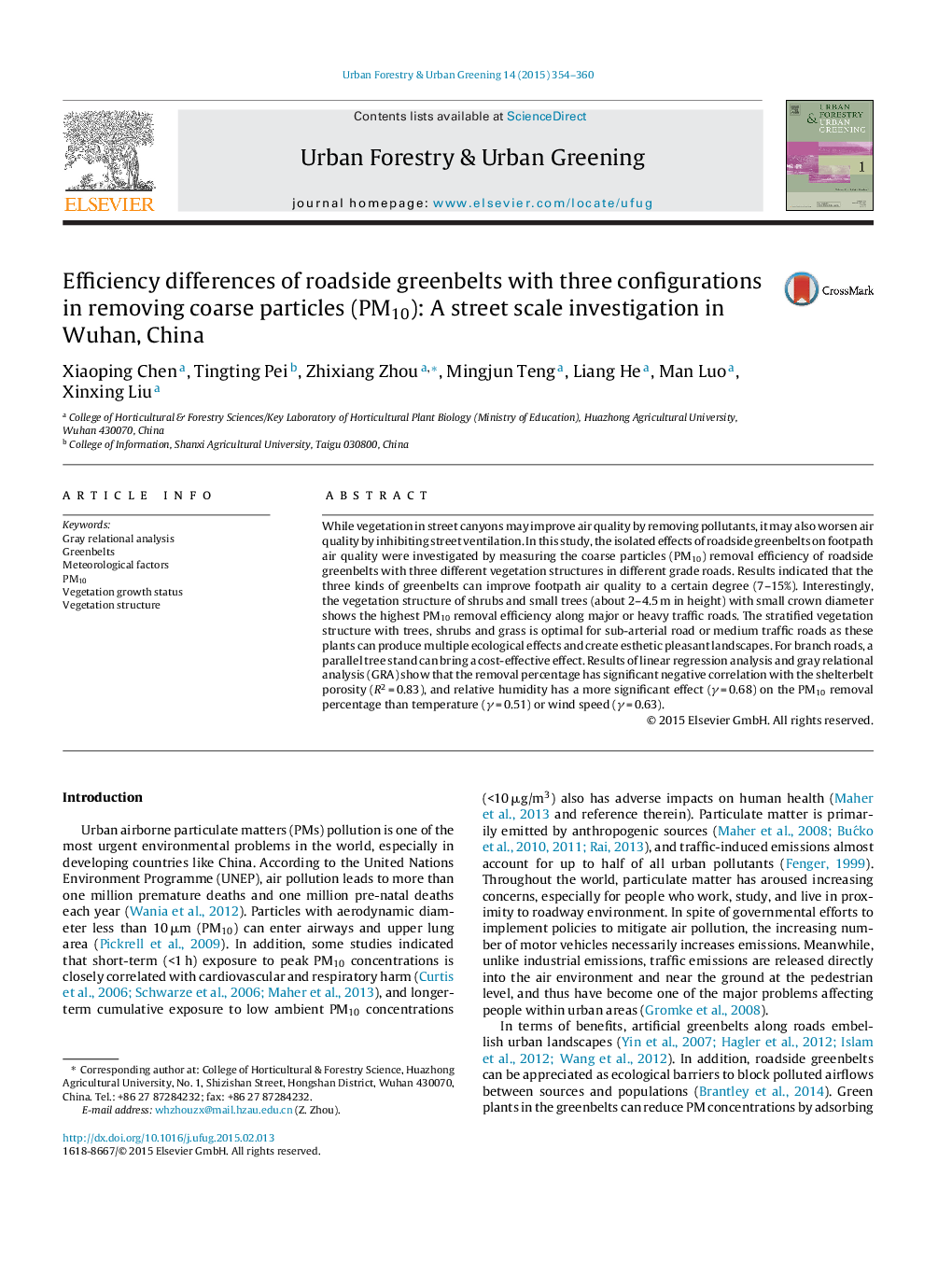| Article ID | Journal | Published Year | Pages | File Type |
|---|---|---|---|---|
| 10252146 | Urban Forestry & Urban Greening | 2015 | 7 Pages |
Abstract
While vegetation in street canyons may improve air quality by removing pollutants, it may also worsen air quality by inhibiting street ventilation. In this study, the isolated effects of roadside greenbelts on footpath air quality were investigated by measuring the coarse particles (PM10) removal efficiency of roadside greenbelts with three different vegetation structures in different grade roads. Results indicated that the three kinds of greenbelts can improve footpath air quality to a certain degree (7-15%). Interestingly, the vegetation structure of shrubs and small trees (about 2-4.5 m in height) with small crown diameter shows the highest PM10 removal efficiency along major or heavy traffic roads. The stratified vegetation structure with trees, shrubs and grass is optimal for sub-arterial road or medium traffic roads as these plants can produce multiple ecological effects and create esthetic pleasant landscapes. For branch roads, a parallel tree stand can bring a cost-effective effect. Results of linear regression analysis and gray relational analysis (GRA) show that the removal percentage has significant negative correlation with the shelterbelt porosity (R2 = 0.83), and relative humidity has a more significant effect (γ = 0.68) on the PM10 removal percentage than temperature (γ = 0.51) or wind speed (γ = 0.63).
Related Topics
Life Sciences
Agricultural and Biological Sciences
Forestry
Authors
Xiaoping Chen, Tingting Pei, Zhixiang Zhou, Mingjun Teng, Liang He, Man Luo, Xinxing Liu,
